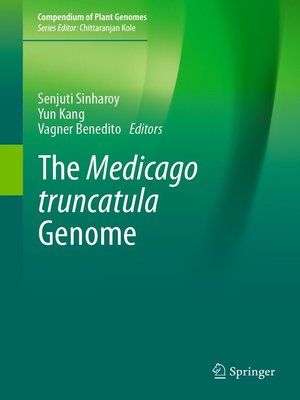
Sign up to save your library
With an OverDrive account, you can save your favorite libraries for at-a-glance information about availability. Find out more about OverDrive accounts.
Find this title in Libby, the library reading app by OverDrive.



Search for a digital library with this title
Title found at these libraries:
| Library Name | Distance |
|---|---|
| Loading... |
This book focuses on the discoveries in M. truncatula genomic research which has been undertaken in the last two decades. Legumes are important for their economic values as food, feed, and fodder and also serve as the pillar of sustainable agriculture because of its biological nitrogen fixation capacity. Medicago truncatula was established as a model legume in the 1990s and has been well adopted as a model internationally since then. M. truncatula is an autogamous, diploid (2n = 16) species with a short generation time, and relatively small genome size (~375 Mbp). The M. truncatula genome was initially sequenced by the International Medicago Genome Annotation Group (IMGAG) in 2011 and has been well-annotated. M. truncatula research benefits from the availability of several genetic and genomic tools, such as gene expression atlas (MtGEA), insertion and neutron bombardment mutant populations, anda HapMap panel containing 384 sequenced inbred lines for genome-wide association studies. This book covers the current status and latest advancements of the M. truncatula genomics and transcriptomics resources along with a glimpse of newly developed tools that makes M. truncatula a front runner model in functional genomic studies.







